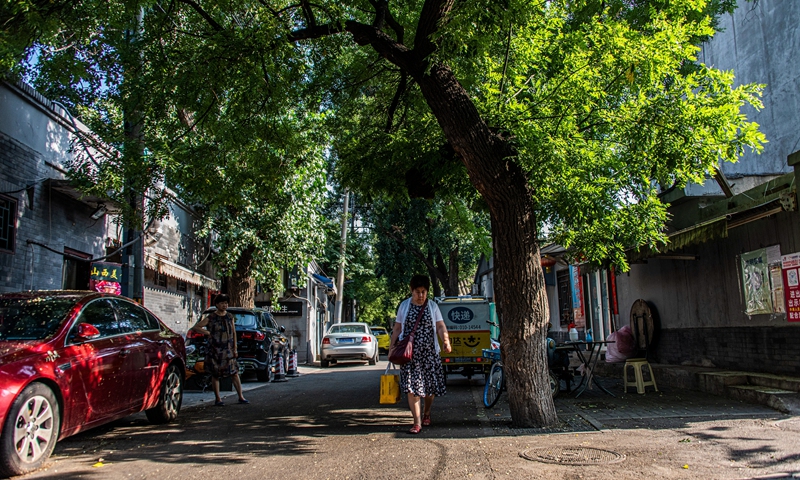
(Photo: VCG)
The full text of the urban plan for Beijing's core area for 2018-35, which was approved by the central authorities, was published on Sunday. The document emphasizes the city's political role, the protection of its cultural heritages, and the orderly dispersal of non-capital functions, including a population cap of 1.7 million by 2035.
The core area, namely Dongcheng and Xicheng districts, covers 92.5 square kilometers with 1.93 million residents as of 2019. It is endowed with the functions of China's political, cultural and international exchange centers, according to the plan.
The draft of the plan was published in December 2019 to solicit public comments. The core area will be optimized to serve Beijing's political role while sustaining the historical layout of the ancient capital. Preservation of cultural heritage sites, such as hutong, houses of past celebrities and other old buildings is highlighted.

(Graphics: GT)
Analysts hailed the plan as of great significance since it is an overall blueprint for the core area, which not only guides the direction of planning but offers specific instructions and standards.
To better achieve the core area's role, the plan sets a resident cap for 2035 at 1.7 million and 2050 at 1.55 million by strict control of new residents and encouraging current residents to move to surrounding districts.
The population goal is possible but challenging, Niu Fengrui, a research fellow at the Institute for Urban and Environmental Studies under the Chinese Academy of Social Sciences, said on Sunday.
Some non-capital functions have already been moved out of the area, such as some state-owned enterprises and municipal administrative organs, which helped ease the congestion problem.
But Niu noted that it takes time to have employees and officials, and their families move out of the area. It is also very challenging to manage active commercial activities.
Niu said that the municipal government may lack the capability to coordinate such a move and the means to pay for it.
The core area plan calls for the better living conditions, including upgrading old houses by improving property management and installing elevators, and providing support for education, health and transport services.
In order to better promote traditional local culture and tourism, 10 tour routes will be designated across the city to offer visitors a glimpse of Beijing's diverse culture and landscape.
The ratio of public space areas will be raised from the current 34.4 percent to 38.9 percent.
In 2010, the Chongwen and Xuanwu districts were merged into the Dongcheng and Xicheng districts respectively, under the approval of the State Council.


